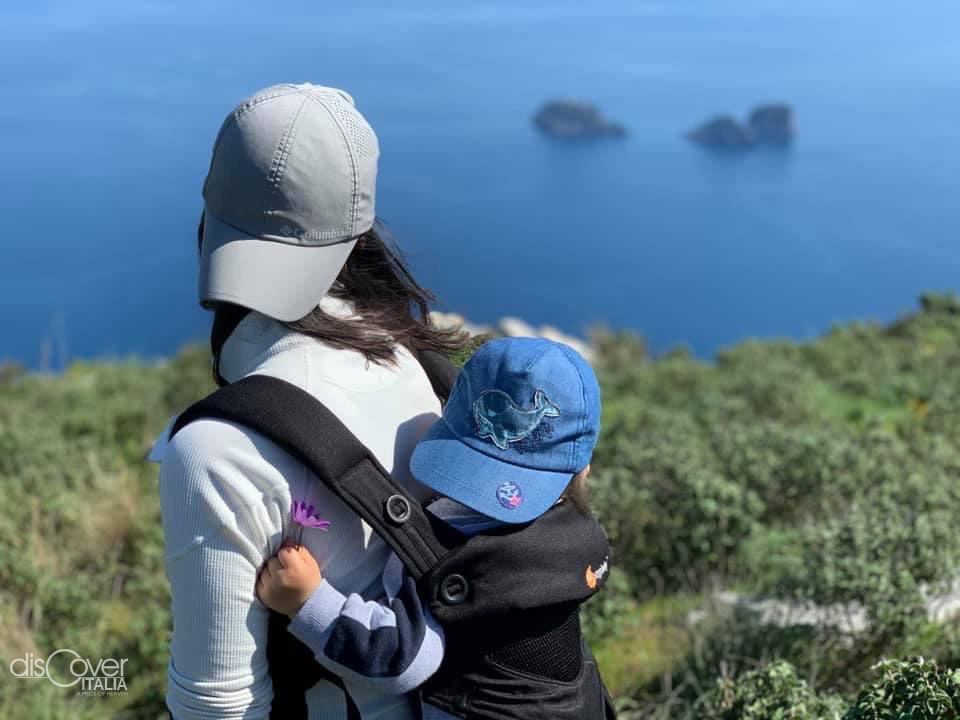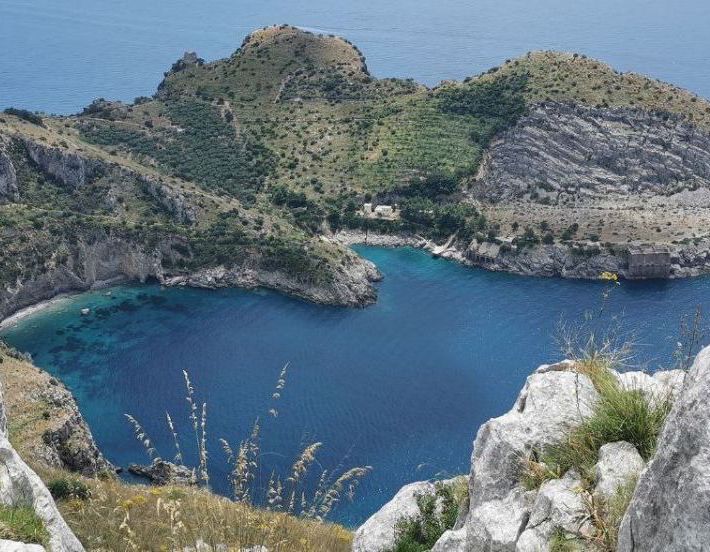 The last centre of the Sorrentine Coast is full of greenery and gardens like the historic one “The Jesus”, an ancient citrus grove implanted by the Jesuits in the 17th century, when the big college known as “Il Quartiere” (the area).
The last centre of the Sorrentine Coast is full of greenery and gardens like the historic one “The Jesus”, an ancient citrus grove implanted by the Jesuits in the 17th century, when the big college known as “Il Quartiere” (the area).
The name appears in the documents since 938 as Massa Pubblica (it maybe derives from mansa longobarda). Lubrense has been added later, due to the devotion to Santa Maria della Lobra (Our Lady of Lobra), venerated in a church built on the site of a roman villa, which had been built on a delubrum, a small temple in honour of Minerva. Largo Vescovado is the heart of the village, with a terrace, which surrounds the gulf of Naples. On the sides, the Church of Santa Maria delle Grazie, with its majolica tiled floor, built in the Sixteenth century and redone two centuries later; and the eighteenth-century Palazzo Vescovile. Between lemon and olive groves, oaks and chestnut groves, different roads twist and turn and lead to ancient farmhouses, between fantastic panoramas, watch-towers and archaeological sites, in a context punctuated by eighteen hamlets.
Going down to Marina della Lobra, a fishermen hamlet of undeniable charm, we get to the homonymous sanctuary, rebuilt in 1564. The convent of 1583 is annexed to the Latin-cross church. Between the recent events of Marina di Lobra, we have to remember that offshore from Vervece Rock, the fantastic man-fish of Sicily, Enzo Maiorca, in 1974 set the world record of scuba diving, touching the depth of minus 80 meters. At the Vervece, a statue of the Madonna (first in glazed plaster and then in bronze) was put under water) which transformed the site in a Sanctuary for the scuba divers and seafarers.
Staying in the environment of the marine routes, we need to mention Baia di Iernanto, at the end of the Sorrentine Peninsula, narrow between Punta Campanella (it is part of the Marine protected Area) and Punta Penna, directly in front of the Faraglioni of Capri. Of unspoilt beauty, between rocky formations covered by the Mediterranean scrub and the olive groves, Ieranto owes its name to two Greek words: ierax, which indicates the falcon, which usually nests there; or ieros, which means sacred, due to toe presence of the temple of the Sirens. This aspect joins with the myth of the exceptional Campanian extension on the sea, Punta Campanella, which seems to touch the island of Capri. It is an evocative since millennia: there was in fact a temple of Athena, which, as Strabo narrates, was built by Ulysses who dedicated it to the Sirens first. Robert of Anjou had the idea of naming it Punta Campanella: in 1335, he built the Minerva Tower which, in 1566, was rebuilt with a defensive function from the pirates invasions (the alert was issued through the sound of a bell).
The biggest hamlet of Massa is Sant’Agata su Due Golfi, the “passage” toward Amalfi Coast, in an enviable position at an altitude of 400 meters, from where it is possible to see the gulf of Naples and Salerno, in addition to the view of Capri. The visit of the Deserto is interesting. It is a hill near the town, where there is a Carmelite hermitage, the first convent and then orphanage of the fathers Bigi of father Lodovico da Casoria. According to some, he hill should be defined as a “Monte Sireniano” (Mount of the Sirens), as the ancient geographers like Strabo used to call it; and the maps always linked to the ritual of the Sirens. On the square, there is the church with an altar of 1600, work of the sculptor and architect from the Florentine school Dionisio Lazzari, made from mother-of-pearl and lapis lazuli, coming from the ancient church of the Girolamini of Naples and unique for its beauty. Continuing, it is possible to go down to Marina di Crapolla, in the territory of Torca: it is reachable only by sea or from a long footpath with hundreds of steps. According to a legend, the Apostle Peter landed there during his trip to Rome. A small church is dedicated to him, venerated by the anglers of the ancient village, risen up on the ruins of Athena’s temple.








Comments powered by CComment